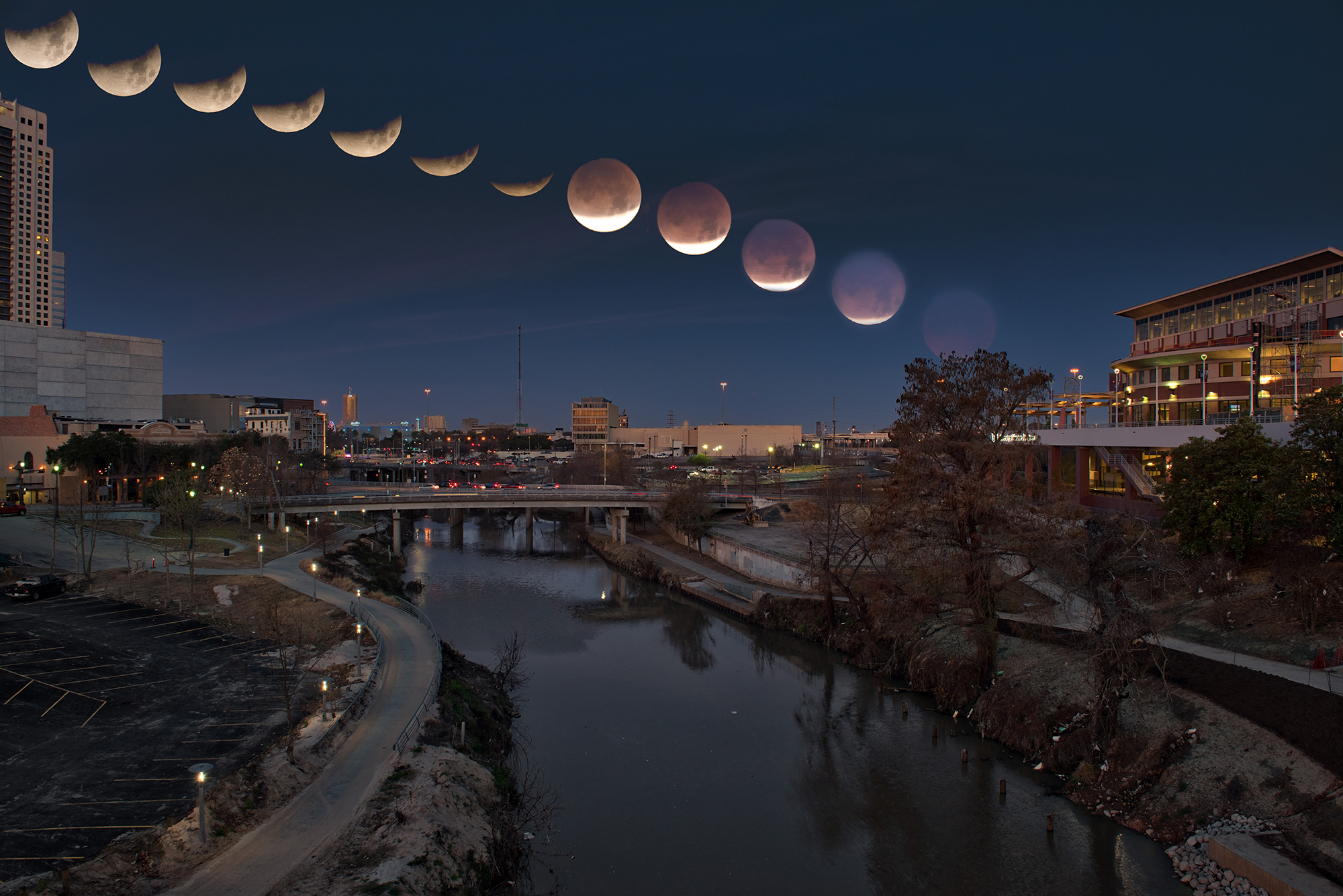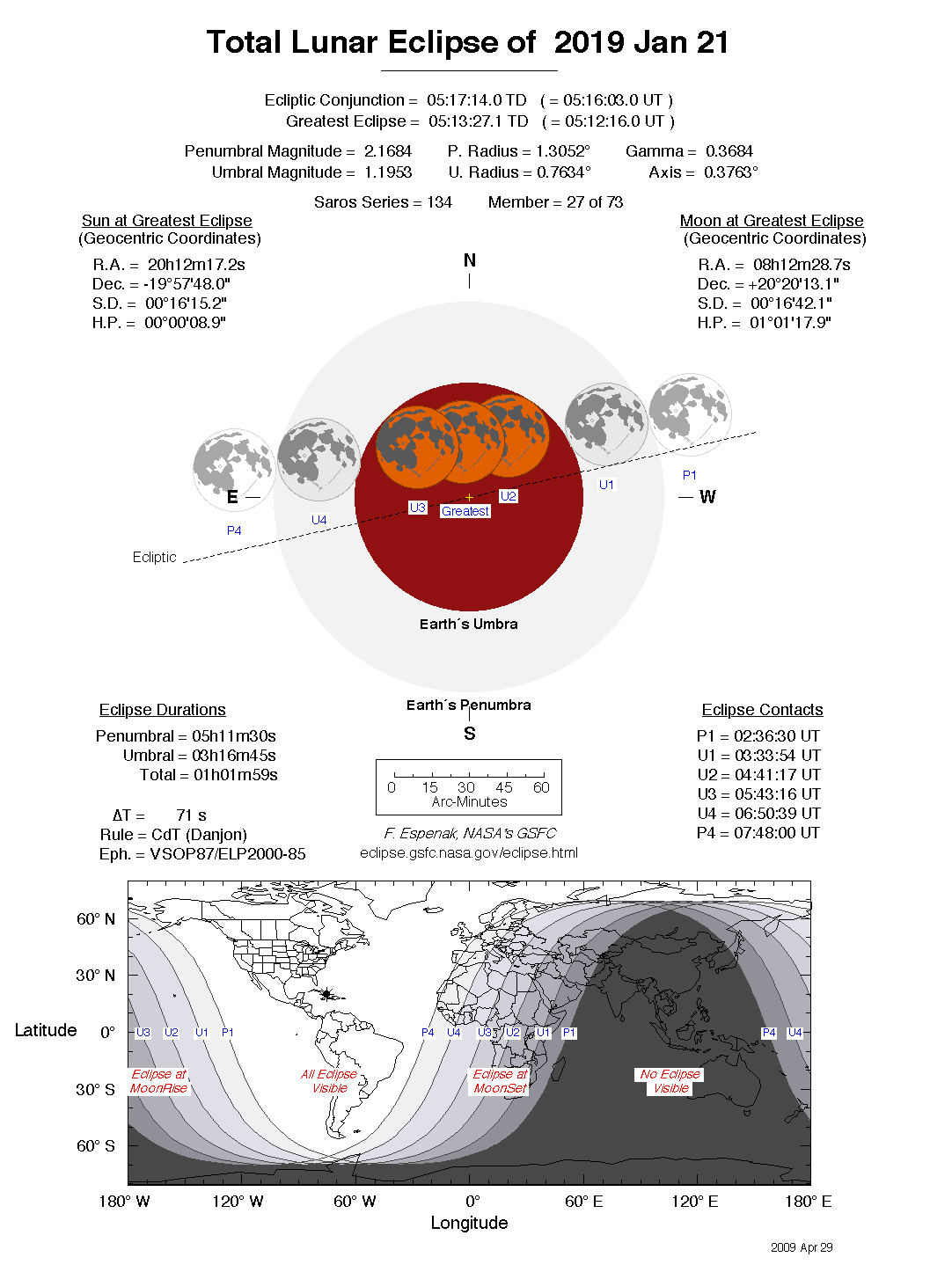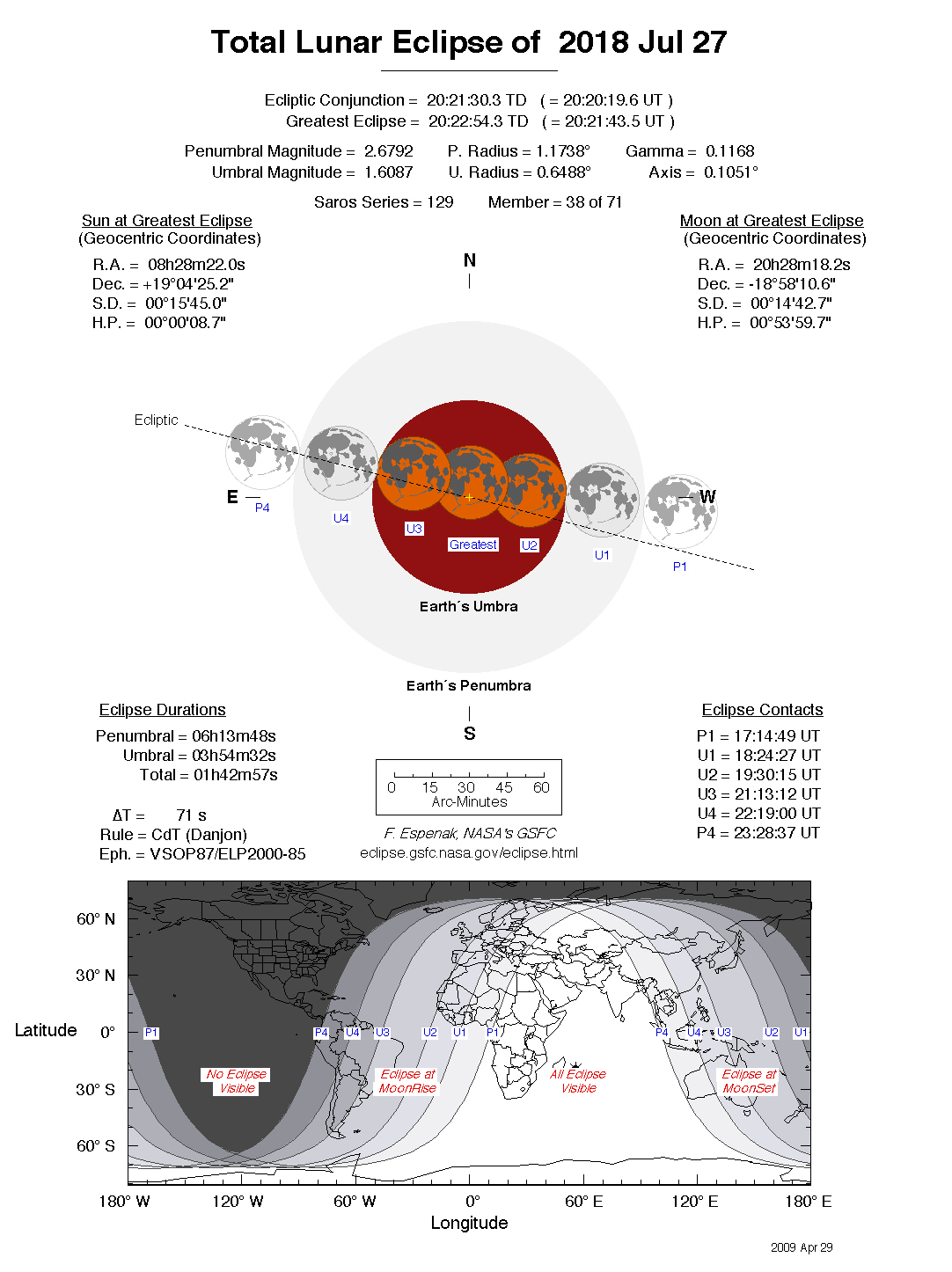Missed the Blood Moon Lunar Eclipse? Here's When the Next One Is Happening
Skywatchers around the world were treated to a rare Super Blue Blood Moon today (Jan. 31). While this was the first time in over 150 years that this particular type of eclipse has happened in the U.S., Americans can look forward to another "blood moon" eclipse coming on Jan. 21, 2019.
This next immediate total lunar eclipse — when the moon appears to turn red as it passes through Earth's dark inner shadow, or the umbra — will occur later this year on July 27. But that eclipse won't be visible from North America. However, much of the rest of the world — South America, Europe, Africa, Asia and Australia — will have a great view of that eclipse.
The Jan. 21, 2019 eclipse, however, will be visible from all of North and South America, weather permitting. Observers in some parts of Europe, Africa and Asia will also be able to see at least some portion of this eclipse. [In Photos: The Rare Super Blue Blood Moon Eclipse of 2018]
While today's Super Blue Blood Moon eclipse was best viewed from the West Coast (because, farther east, the moon was below the horizon for much of the eclipse), the 2019 one will be visible in its entirety from coast to coast.
The lunar eclipse on Jan. 21, 2019, also happens to be a so-called supermoon. This means that the moon will be at perigee, or the point in its elliptical orbit at which it is closest to Earth.
During a supermoon, which can happen only when the moon is full, the moon appears slightly larger and brighter than usual. However, the difference is hardly noticeable to casual stargazers.
One difference between today's eclipse and the one happening next year is that the next one will not be a Blue Moon. Astronomers have two different definitions for Blue Moons: They can be the second full moon in one month or the third full moon in a season that has four full moons. The next time that will happen is on March 31.
Breaking space news, the latest updates on rocket launches, skywatching events and more!
After the Jan. 21, 2019 total lunar eclipse, stargazers will have to wait more than two years for the next one. The year 2019 will see one more lunar eclipse, a partial eclipse on July 16 of that year, and will be followed by four relatively minor penumbral eclipses (where the moon passes through the outer edge of the Earth's shadow, called the penumbra) in 2020. After that, the next total lunar eclipse will be May 26. 2021.
We'll have to wait another decade before the next Blue Blood Moon, which will happen on Dec. 31, 2028. (Just when we thought that there couldn't possibly be more adjectives in front of the word "moon," now we have the New Year's Eve Blue Blood Moon to look forward to!) That lunar eclipse will be visible over all of Asia and much of Europe, Africa, Australia and North America.
The next Super Blue Blood Moon won't happen until Jan. 31, 2037, and it will be visible in North America, Europe, Asia, Australia and parts of Africa.
Solar eclipses, too!
Eclipses of the lunar variety are certainly not the only eclipses we have to look forward to this year. We're just two weeks away from the next solar eclipse and the first solar eclipse of 2018.
On Feb. 15, the moon will partially block the sun over Antarctica and part of South America. Then on July 13, another partial solar eclipse will be visible south of Australia. The third solar eclipse of the year will also be only a partial eclipse, and it can be seen from northern Europe, northern Asia and parts of eastern Asia.
Editor's note: If you captured an amazing photo or video of the total lunar eclipse and would like to share it with Space.com for a story or gallery, send images and comments to spacephotos@space.com.
Email Hanneke Weitering at hweitering@space.com or follow her @hannekescience. Follow us @Spacedotcom, Facebookand Google+. Original article on Space.com.

Hanneke Weitering is a multimedia journalist in the Pacific Northwest reporting on the future of aviation at FutureFlight.aero and Aviation International News and was previously the Editor for Spaceflight and Astronomy news here at Space.com. As an editor with over 10 years of experience in science journalism she has previously written for Scholastic Classroom Magazines, MedPage Today and The Joint Institute for Computational Sciences at Oak Ridge National Laboratory. After studying physics at the University of Tennessee in her hometown of Knoxville, she earned her graduate degree in Science, Health and Environmental Reporting (SHERP) from New York University. Hanneke joined the Space.com team in 2016 as a staff writer and producer, covering topics including spaceflight and astronomy. She currently lives in Seattle, home of the Space Needle, with her cat and two snakes. In her spare time, Hanneke enjoys exploring the Rocky Mountains, basking in nature and looking for dark skies to gaze at the cosmos.



